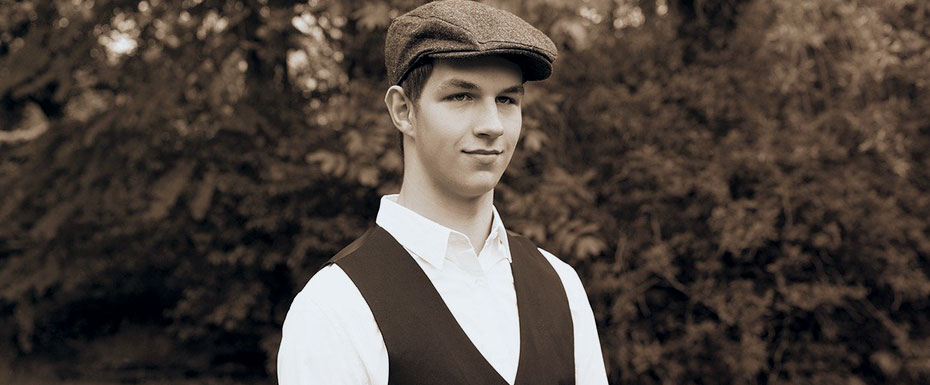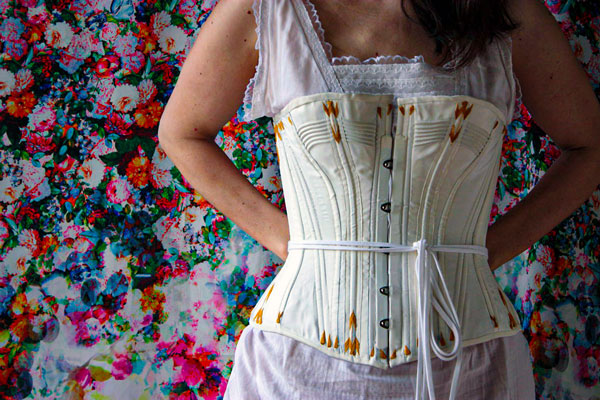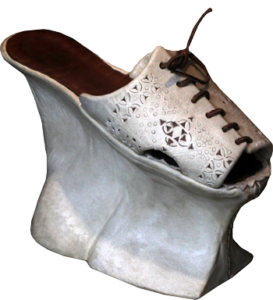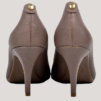
For a long time, women have lived with a constant eye on the opinion of society and made monstrous sacrifices in order to meet expectations. The freedom we enjoy today came to us only recently: we are talking about trends that caused women maximum discomfort and suffering.
Constantly changing beauty standards, pressure from society and moral fanatics, fear of being ridiculed and rejected forced women to go on dangerous, crippling, and sometimes deadly experiments with their appearance. Disability for the sake of a successful marriage, a brain tumor in exchange for porcelain skin, the refusal of the ability to breathe fully for the sake of a tiny waist – and this is not a complete list of the things that women agreed on, trying to meet the demands of a patriarchal society. Fortunately, today women have much more choice – we can wear any clothes we want, focusing on our taste, and not on the needs of others. However, this was not always the case.
Corsets
Corsets are still popular with women today, but modern models cannot be compared with those that women were forced to wear in the past. The constructions made of fabric and whalebone that appeared in the 16th century were designed to “tighten” a woman’s waist to the required parameters and maintain an impeccable posture. Also, corsets were a sign of the strength of a woman’s moral foundations, and the rejection of them was regarded as indiscretion and immorality. It is difficult to imagine what it was like for women to put themselves in these shackles every day, which did not allow them to breathe and move normally. The consequences of such tortures were disastrous: squeezing of the ribs and heart muscle, miscarriages (pregnant women also wore corsets since it was considered impolite to take off the corset and show a rounded belly!), fainting, suffocation, and even death.

Only in the 19th century, doctors began to warn women against lacing corsets too tight. Beginning in the 1860s, the medical journal The Lancet, which is still in print today in the UK, has regularly published articles on the dangers of tight lacing. Fortunately, in the 20th century, corsets were replaced by the bra, which completely replaced the crippling item of women’s clothing.
Crinoline addiction
In the first half of the 19th century, wide crinoline skirts came into fashion. This skirt was, in fact, a frame made of whalebone or linen hoops. It was believed that wide crinoline skirts (their diameter reached 180 centimeters) made it possible to maintain the necessary distance between women and men and gave a woman’s gait lightness and smoothness. This garment has become so popular that the British magazine Punch has introduced a special term dedicated to this fashion – “crinolinemania.”
Naturally, such a design caused its mistress a lot of inconveniences: difficulties arose when entering the doorway, trying to sit down, and when boarding the carriage, it was absolutely impossible to go to the toilet, so women were forced to endure, which caused problems with their health. Accidents were not uncommon – women who underestimated the size of their skirts came too close to open fire, resulting in catching fire. And since it was not possible to quickly free oneself from such a complex structure, the unfortunate ones simply burned to death.
Regardless, the invention of the French fashion designer Charles Frederick Worth was popular among fashionistas for a long time, and it is not known how many women died in tribute to fashion.
Chopine

If you think that modern heeled shoes are uncomfortable, you are not familiar with the shoes that were worn in Europe in the 15th-17th centuries. This shoe, which appeared in Venice, was called “chopine” and was constructed on a platform about 50 centimeters high. Women who wore such shoes could not move freely, so they either used a cane or were forced to walk accompanied by maids who did their best to “support” them.
Like many other garments of the past, chopines were a kind of indicator of the level of nobility of the woman who wore them and were widespread among the nobility, even though the Catholic Church considered these shoes to be dissolute and defiant.
However, at the beginning of the 17th century, courtesans began to wear them, and the popularity of platform shoes began to decline. Also, the decline in the popularity of chopines is associated with an incident in Venice, when a pregnant woman fell from them and lost a child.
Soon chopines returned to fashion, albeit in a safer format: in 1937, Italian designer Salvatore Ferragamo created shoes with a high cork platform, taking as a basis the shoes that were once popular in Europe.
Belladonna for a radiant look
Today women use makeup techniques and colored contact lenses to make their eyes appear deeper and larger. However, such methods were not available to our predecessors, and they used what was at hand – belladonna juice. This poisonous plant was used as a narcotic, and fashionable women in Italy and France instilled its juice in the eyes.
The effect was definitely noticeable: the gaze became radiant and deep, the pupils dilated greatly. However, there were also side effects: such experiments led to blindness, hallucinations, and sometimes death. Belladonna juice was at its peak in popularity until the 20th century, when scientists began to associate cases of blindness and death with its use.





